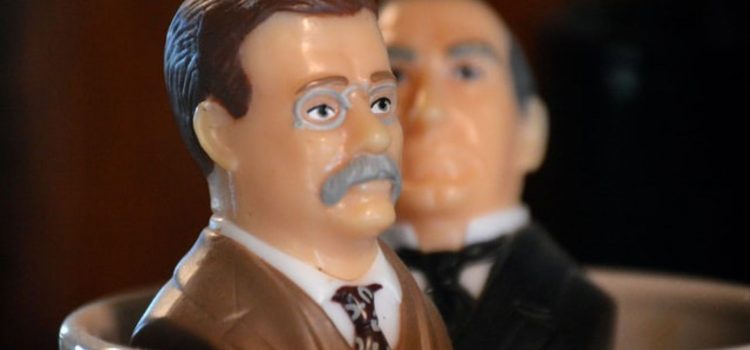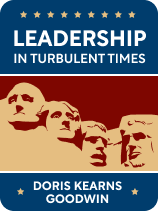

This article is an excerpt from the Shortform book guide to "Leadership: In Turbulent Times" by Doris Kearns Goodwin. Shortform has the world's best summaries and analyses of books you should be reading.
Like this article? Sign up for a free trial here .
What was the greatest accomplishment of Theodore Roosevelt? How did a family tragedy help Theodore Roosevelt end a coal strike that threatened the lives of thousands?
Teddy Roosevelt, who led the country from 1901 to 1909, was instrumental during the coal strike of 1902, when coal miners and mine owners faced off in a months-long strike that threatened to plunge the nation into crisis. According to historian Doris Kearns Goodwin, Roosevelt’s decision to intervene during this strike is evidence of courage and a bias towards action—both of which he developed after experiencing his own personal crisis.
Here’s how a personal crisis became a turning point in Theodore Roosevelt’s leadership.
How Roosevelt’s Crisis Affected His Leadership
A turning point in Theodore Roosevelt’s leadership came in 1902 when Roosevelt faced a major dilemma during the coal mine workers’ six-month strike to protest dismal labor conditions. Roosevelt needed the mine workers and owners to reach a resolution: At the time, the Northeast relied on coal for fuel during the winter, and without it, the region would plunge into crisis. However, as president, Roosevelt technically didn’t have the legal standing to intervene in the situation.
Despite this reality, Roosevelt chose to intervene anyway—ultimately ending the strike and setting the precedent that presidents could help solve labor disputes. These decisions were only possible, Goodwin argues, due to the courage and bias towards action that Roosevelt learned after his crisis. Roosevelt was brave enough to step outside of the traditionally accepted presidential role, and he chose to protect the American public as he saw fit, despite the lack of precedent—and in doing so, redefined the previously private issue of labor disputes as a public interest issue in which the president could get involved if necessary.
| Roosevelt’s Mindset Shift: From Ladder to Jungle Gym Roosevelt’s shift in how he approached his career reflects what Lean In author Sheryl Sandberg describes as a metaphorical shift from ladder to jungle gym. Sandberg explains that while you used to be able to describe career success as climbing a ladder from lower to higher positions, a more apt metaphor for career success today is a jungle gym: You switch jobs, make lateral moves, and take more risks—and you can still succeed. Similarly, Roosevelt went from slowly climbing the ladder to the presidency to climbing a jungle gym. He did this by taking every position he was offered because he wasn’t sure if he would ever achieve his ultimate goal—and he achieved his dream anyway. How can you, like Roosevelt, achieve your ultimate goal while still approaching your career like a jungle gym? Sandberg recommends that you set two plans. First, set a long-term dream. This doesn’t have to be realistic or specific, but even a vague goal will provide direction. Second, set 18-month goals on two fronts: targets for what your team can accomplish professionally, and targets for learning new personal skills that relate to your career—like how Roosevelt learned to solve issues quickly and efficiently without getting bogged down by bureaucracy. |
How the Coal Strike of 1900 Affected Roosevelt’s Actions
It’s possible that it wasn’t Roosevelt’s decision to intervene during the coal strike of 1902 that reflected his courage and bias towards action, but rather his decision to intervene openly. Although presidents hadn’t intervened in labor disputes publicly and officially prior to Roosevelt, presidents had previously intervened in labor disputes in less public ways.
For example, in September 1900, coal miners went on strike right before the re-election campaign of Roosevelt’s predecessor, William McKinley. Worried about the potential impact of this strike on the election, McKinley privately convinced the coal mine operators, who supported him, that his re-election would be in jeopardy unless they ended the strike quickly. As such, these operators agreed to award some benefits to the miners in order to shut down the strike. In this way, McKinley also stepped outside the presidential role and acted. But unlike Roosevelt, he did so secretly and appeared to have been motivated primarily by his desire to win the election—not his desire to protect the Northeast’s fuel.
Moreover, it’s possible that the strike of 1900 ensured that Roosevelt’s intervention in the strike of 1902 required even more courage than it would have had the former strike never happened. Historians argue that the coal mine operators were particularly resistant to Roosevelt’s interference in 1902 because they’d been forced by McKinley to cave to the miners in 1900—which made Roosevelt’s decision to interfere anyway that much more remarkable.

———End of Preview———
Like what you just read? Read the rest of the world's best book summary and analysis of Doris Kearns Goodwin's "Leadership: In Turbulent Times" at Shortform .
Here's what you'll find in our full Leadership: In Turbulent Times summary :
- How great leaders grow from tragedy and personal challenges
- How FDR’s polio diagnosis helped him lead the country through the Great Depression
- Why Lyndon B. Johnson’s heart attack instrumental to the civil rights movement






